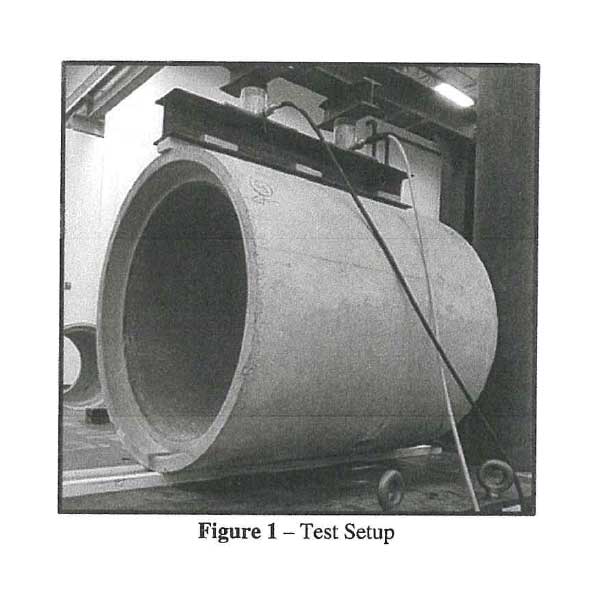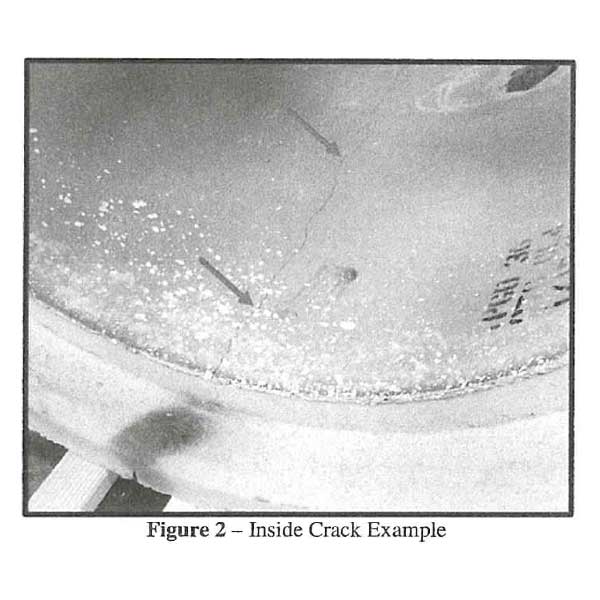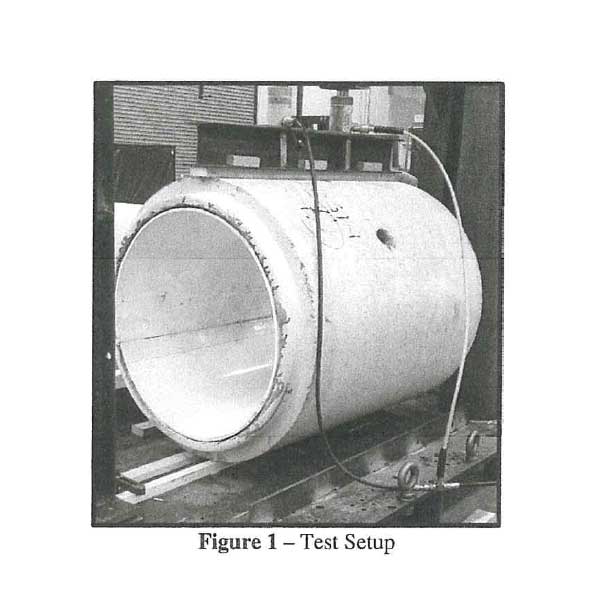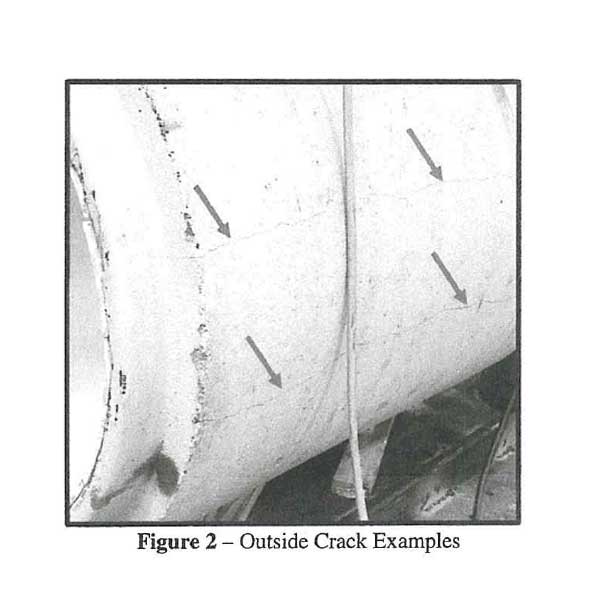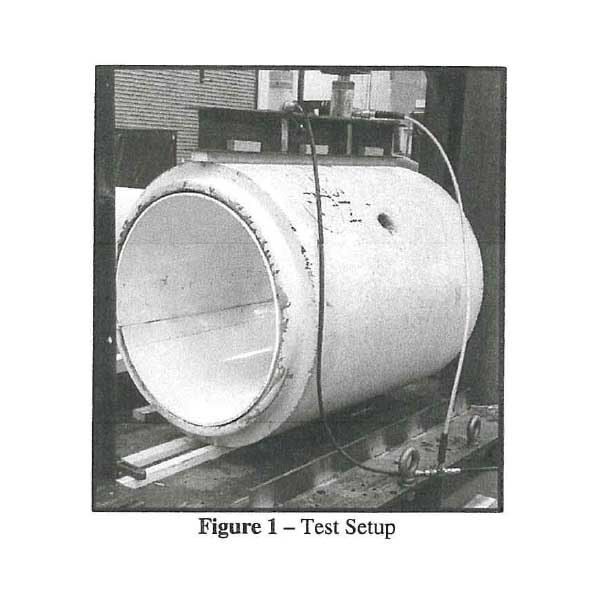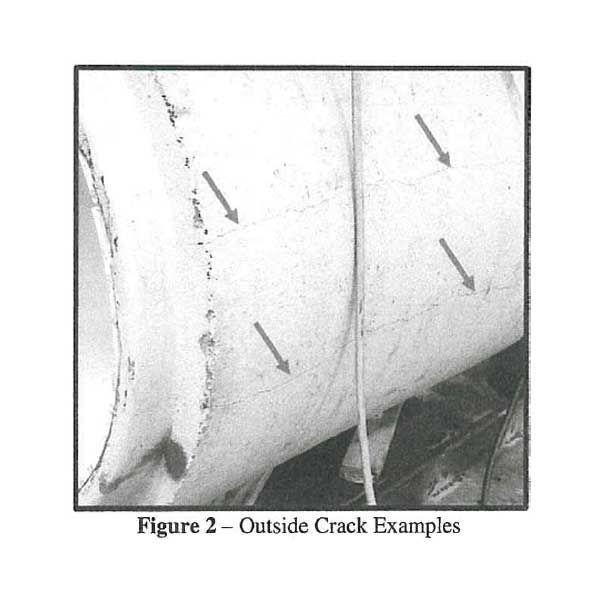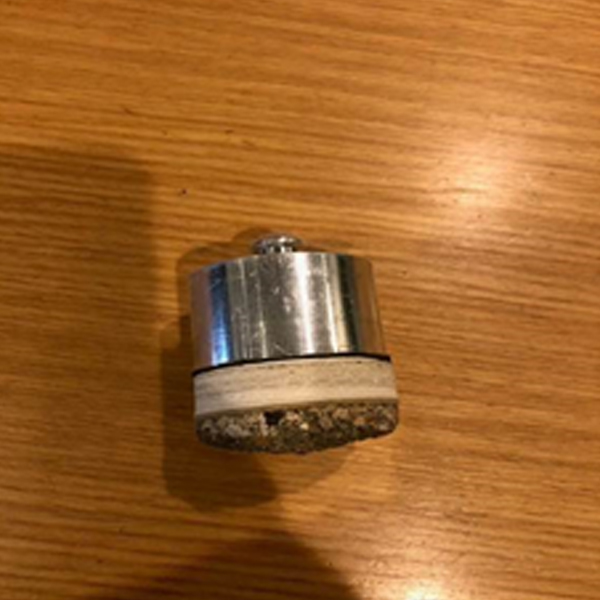Technical Data on Resinating Fiberglass Expansion Liners
and Resinating’s EIPI Technology
Overview
The technical data supporting our claims relative to the unequaled structural integrity provided by Resinating Fiberglass Expansion Liners and Resinating’s EIPI Technology is covered in this section of the website.
The results of the following laboratory tests are summarized in sections below. There is a link to the actual Laboratory Report for each test at the end of each summary:
- ASTM C497 tests of Resinating Liners vs Class III RCP
- Pull Test of Resinating Liners bonded to concrete
- ASTM C497 tests of Resinating Liners vs Hobas
- ASTM D790 tests of Resinating Liners vs Hobas
Simply stated, these test results confirm the extraordinary strength of EIPI Technology and Resinating Fiberglass Expansion Liners…they are STRONG!
- Class III RCP that had failed, when lined with a Resinating Liner was 50% +/- stronger than when the RCP was new.
- In the “Pull Test” on the Resinating Liner, the weakest link broke first…the concrete.
- Hobas 46 that had failed, when lined with a Resinating Liner was 100% +/- stronger than when the Hobas was new.
- Resinating Liners withstood up to 72,000 PSI before breaking, 3.5 times the pressure that liners from a leading global manufacturer of fiberglass liners could withstand.
The specific data and the photos in the original laboratory reports summarized in the sections below tell quite a story about the strength and durability of the Resinating’s EIPI Technology and Resinating Fiberglass Expansion Liners.
- There is clearly no need to Trench & Replace RCP or Hobas or any other type of pipe or manhole when it fails…Resinate it.
- Likewise, as the CIPP and SIPP sections of The Better Choice tab explain, EIPI Technology and Resinating Liners are far superior solutions when one is planning to rehabilitate failing pipes or manholes…Resinate them…it’s The Better Choice!
To avoid any confusion, you will see that the tests were conducted for AFE, Resinating LLC’s sister company, and in the name of Shumard Corp. Shumard is the legal corporate name of the company that does business as AFE, Associated Fiberglass Enterprises.
ASTM C497 Tests: Resinating Liner vs Class III RCP
These ASTM C497 tests were performed by Applied Technical Services of Marietta, Georgia. The RCP used in the test was a Class III RCP, 36” in diameter, made by a major RCP manufacturer. In the photos below, you can see the cracks in the RCP running between each pair of arrows.
Test 1 – RCP alone: New RCP failed (long crack inside) at about an average load of 7786 pounds/linear-foot (lbf).
Test 2 – New RCP with a Resinating Liner inserted and bonded. The RCP developed cracks on the outside at an average load of 12,024 lbf…that’s 54% stronger than Test 1. Cracks on the inside couldn’t be seen due to the presence of the liner) The new RCP lined with a Resinating Fiberglass Expansion Liner was substantially stronger than new RCP…better than new.
It is also notable that while the RCP failed at this increased load, there were no cracks or damage to the Resinating Fiberglass Expansion Liner.
Test 3 – Retest cracked RCP from Test 1 with a Resinating Fiberglass Expansion Liner bonded to the inside of the RCP: In this test, the RCP from Test 1 generated cracks on the outside of the RCP at about an average load of 11,314 lbf. That’s 45% stronger than Test 1 with the RCP alone. As in Test 2, the failed RCP, lined with a Resinaitng Fiberglass Expansion Liner now bonded to it, was substantially stronger than new RCP…better than new.
Again, It is notable that while the RCP failed at this increased load, there were no cracks or damage to the Resinating Fiberglass Expansion Liner.
Test 4 – Resinating Liners tested by themselves: This test was an effort to determine the point at which a Resinating Fiberglass Expansion Liner itself would fail. Unfortunately, from a testing perspective, but fortunately from the perspective of the Resinating Liners, the test equipment reached its capacity before the Resinating Liners could fail. The Resinating Liners showed no damage as the 36” liners were compressed 6 inches for a 17% Deflection. The test equipment could not exert any more pressure at that point because with that deflection, the Resinating Liner hit the frame of the equipment.
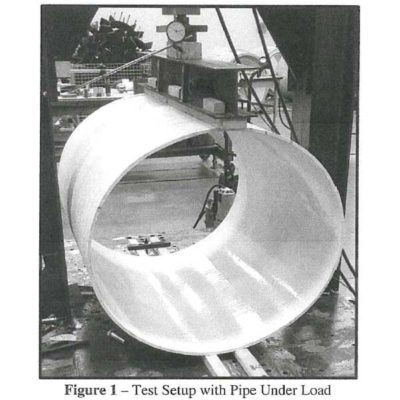
Resinating Liner “Pull Test”
ASTM C497 Tests: Resinating Liner vs Hobas
These ASTM C497 tests were performed by Metallurgical Engineering Services, Inc of Richardson, Texas. Two sets of tests were conducted.
The tests conducted on February 18, 2020 tested both new 30” Hobas 46 and Hobas 72 pipe without a Resinating Liner inserted and then additional new Hobas 46 and Hobas 72 pipe with a ½” Resinating Fiberglass Expansion Liner inserted.
- The new unlined Hobas 46 pipe failed with an average load of 9615 lbf whereas the new Hobas 46 lined with a Resinating Liner withstood 20646 lbf before it failed. The new Hobas 46 lined with a ½” Resinating Liner was 115% stronger than the Hobas 46 by itself.
- The new unlined Hobas 72 pipe failed with an average load of 14161 lbf whereas the new Hobas 72 lined with a Resinating Liner withstood 23938 lbf before it failed. The new Hobas 72 lined with a ½” Resinating Liner was 69% stronger than the Hobas 72 by itself.
- There was no noticeable damage to the Resinating Liners when the Hobas failed.
The second test session conducted on February 27, 2020, also conducted by Metallurgical Engineering Services, Inc tested the strength of the failed Hobas 46 pipe from the February 18th test when they were lined with ½” Resinating Liners.
- Whereas the new, unlined Hobas 46 pipe from the February 18th test failed at an average load of 9615, in this test with the Resinating Liner inserted, it withstood an average load of 19,073 lbf. The failed Hobas 46 pipe was 98% stronger than when it was new.
- There was no noticeable damage to the Resinating Liners when the Hobas failed.
As the results of the ASTM C497 tests of Resinating vs Hobas below show, 30” Resinating Liners showed no damage when compressed 7.29” for a 24.6% Deflection which is the point at which the Hobas 46 failed. The maximum deflection for a Resinating Liner is still unknown.
Here’s a photo of a failed Hobas pipe from the report:
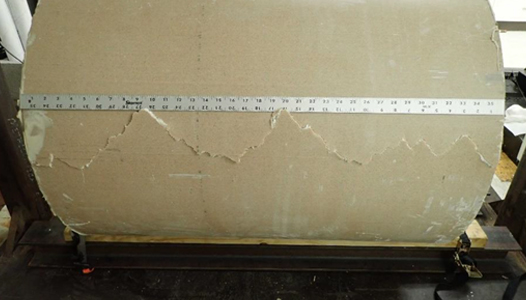
Sample Hobas Failure
ASTM D790 Tests
In the D790 tests done by Dallas Laboratories, Inc in Dallas, Texas, the strength of two sizes of Resinating Fiberglass Liners was tested vs two sizes of liners from a leading global manufacturer of fiberglass liners. The D790 test applies pressure as shown in the pictures below to determine the load and the PSI that creates a complete failure in the liner material.
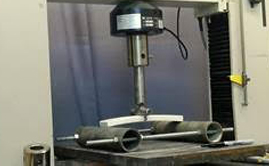
D790 Test Setup
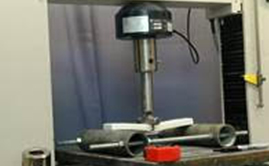
Under pressure but not breaking
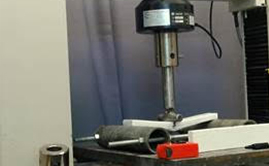
More pressure…delamination starting as we approach 70,000 PSI and the final breakdown. This is 3 ½ times the pressure that broke the Competitive Liners.
This table below summarizes the overall test results for the liners of a leading global manufacturer versus Resinating Fiberglass Expansion Liners:
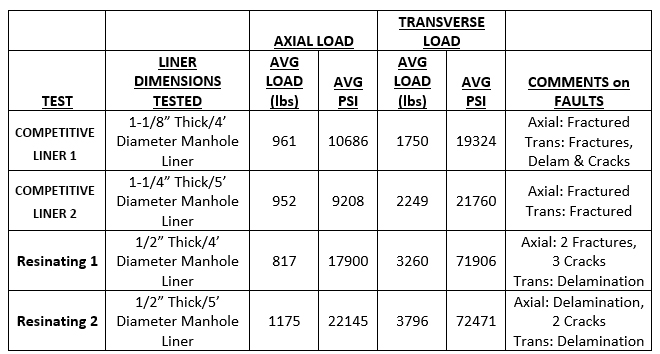
As the test results above show, in the Axial Direction, while the Average Load was approximately the same in all tests before serious damage occurred, in the Transverse Direction, the Resinating Liners handled about 75% more load before fracturing than the samples from a leading global manufacturer of fiberglass liners.
From a PSI perspective, the Resinating Liner can accommodate approximately 2x the PSI in the Axial Direction and more than 3x the PSI in the Transverse Direction compared to the other fiberglass liners tested before failures start to occur.
The BOTTOM LINE
Resinating Fiberglass Expansion Liners installed using Resinating’s EIPI Technology are extremely strong compared to any other option for the rehabilitation of pipes and manholes. That strength, combined with the fact that Resinating Liners are completely non-porous and impervious to the chemical or biological agents found in waste water or storm water systems, is why Resinating LLC can warranty Resinating Fiberglass Expansion Liners for 20-years.
With the 45 years of experience that AFE, Resinating LLC’s partner and sister company, has had manufacturing liners using the same manufacturing technology with no warranty claims, no-post warranty requests for repair and no liners having been taken out of service that AFE knows of, combined with the indestructible nature of Resinating Fiberglass, it is clear why Resinating Liners have a useful life of 100 years or more.

